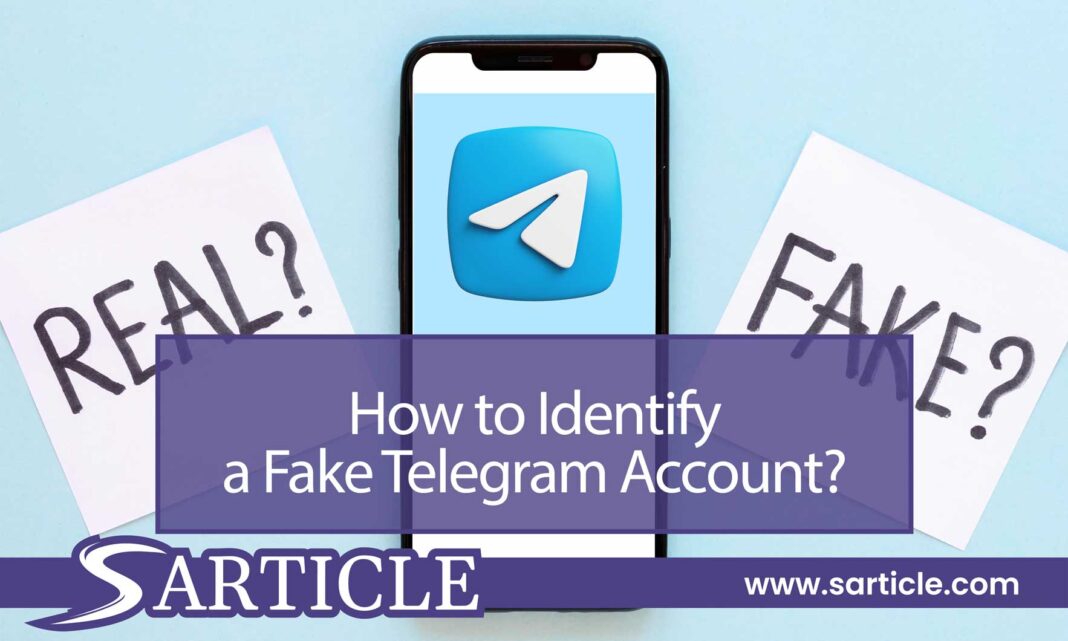Do you use Telegram for your daily messaging? Then we’ll walk you through how to identify a fake Telegram account and the telltale signs of a fake Telegram account. So get ready and equip you with the knowledge to stay safe and secure online.
In the evolving digital world communication has become increasingly virtual. So messaging apps like Telegram have become essential for staying connected. But, with the rise of social platforms, fake accounts have also surged. The account poses significant risks to user safety and privacy. Spotting these fraudulent accounts is crucial to protecting ourselves and our loved ones from scams or cyber threats.
That’s why we will show you how to know if a telegram account is real or not. So, no more waiting, let’s have a chitchat!
What is Telegram and its Popularity?
Telegram is a popular instant messaging platform renowned for its security and privacy features. Launched in 2013, it quickly gained traction due to its three magnificent features.
- End-to-end encryption
- Self-destructing messages
- Ability to create anonymous accounts.
This anonymity, unfortunately, also attracted the attention of scammers and imposters.
What are The Dangers of Fake Telegram Accounts?
Fake Telegram accounts can be conduits for various malicious activities, including phishing, spamming, spreading misinformation, and luring users into scams. It is essential to be vigilant and discerning when encountering unknown contacts on the platform. Recently we are finding too many Telegram messenger scams. Most of the scams are conducted by telegram fake profiles.
How to Identify a Fake Telegram Account?
How to know if a telegram account is fake? Well. Identifying fake Telegram accounts starts with recognizing certain red flags. We are making it easy for you. Follwo the below.
Unusual or Suspicious Profile Pictures
Fake accounts often use stock images or pictures of celebrities, while others might have blurry or low-quality images. If the profile picture seems too perfect or unrelated to the account name, proceed with caution.
Limited or No User Activity
Genuine Telegram users typically have an active history of messages, groups, or channels they belong to. Fake accounts may show limited or no activity and could have been recently created.
The abundance of Grammatical Errors
Many fake accounts are operated by scammers from non-English speaking countries, leading to frequent grammatical errors in their profiles and messages.
Learn more: How to Know If Someone Deleted Their Tiktok Account?
Missing or Incomplete Bio Information
Authentic Telegram users often have detailed bios with information about themselves or their interests. Fake accounts may lack this information or have vague, generic descriptions.
Suspicious Behavior and Requests
Be wary of accounts that immediately ask for personal information, or financial transactions, or try to redirect you to external websites. Genuine users rarely make such requests early on.
In-Depth Analysis of Account Activity
Delving deeper into the account’s activity can provide valuable insights into its legitimacy:
Message Timestamps and Frequency
Check for irregularities in message timestamps and frequency. Genuine accounts usually have a consistent pattern of interactions, while fake ones might have random or sporadic activity.
Group and Channel Participation
Analyze the groups or channels the account is part of. Authentic users engage in communities of interest, whereas fake accounts may not be actively involved in any. Also there will be scamming telegram chats to avoid.
Contact List
Examine the account’s contact list for any suspicious profiles or unfamiliar names. It’s common for fake accounts to have limited or entirely unrelated contacts.
The Importance of Mutual Contacts
Authenticating an account can be easier when you share mutual contacts:
Contact Common Friends
Reach out to mutual contacts and inquire about the account in question. If they have no knowledge of the account or doubt its authenticity, proceed cautiously.
Verify Identity Outside Telegram
Seeking verification from external sources, such as social media or official websites, can be instrumental in confirming the account’s legitimacy.
Conclusion
Knowing fake Telegram channels also helps knowing how to know if a telegram account is real. Identifying fake Telegram accounts requires a keen eye, caution, and proactive measures. By understanding the red flags and analyzing account activity, you can safeguard yourself and your connections from potential online threats.
FAQs
Can fake Telegram accounts be traced back to the perpetrator?
Tracing fake accounts can be challenging due to the use of VPNs and anonymous proxies, but it’s not impossible. If you encounter fraudulent activity, report it to Telegram support immediately.
What should I do if I suspect an account to be fake?
Refrain from sharing personal information or engaging with the account. Report it to Telegram and block the user to prevent further communication.
Are all accounts without a profile picture fake?
Not necessarily, but a lack of profile picture could be a potential red flag. Genuine users might not upload a picture, but it’s more common for fake accounts to skip this step.
Can fake accounts spread malware through Telegram?
While Telegram’s encryption offers robust security, some fake accounts may still attempt to distribute malicious content. Avoid clicking on suspicious links and downloading files from unknown sources.
Is Telegram doing enough to combat fake accounts?
Telegram continuously improves its security measures to tackle fake accounts, but users’ vigilance and reporting are vital in keeping the platform safe for everyone.


